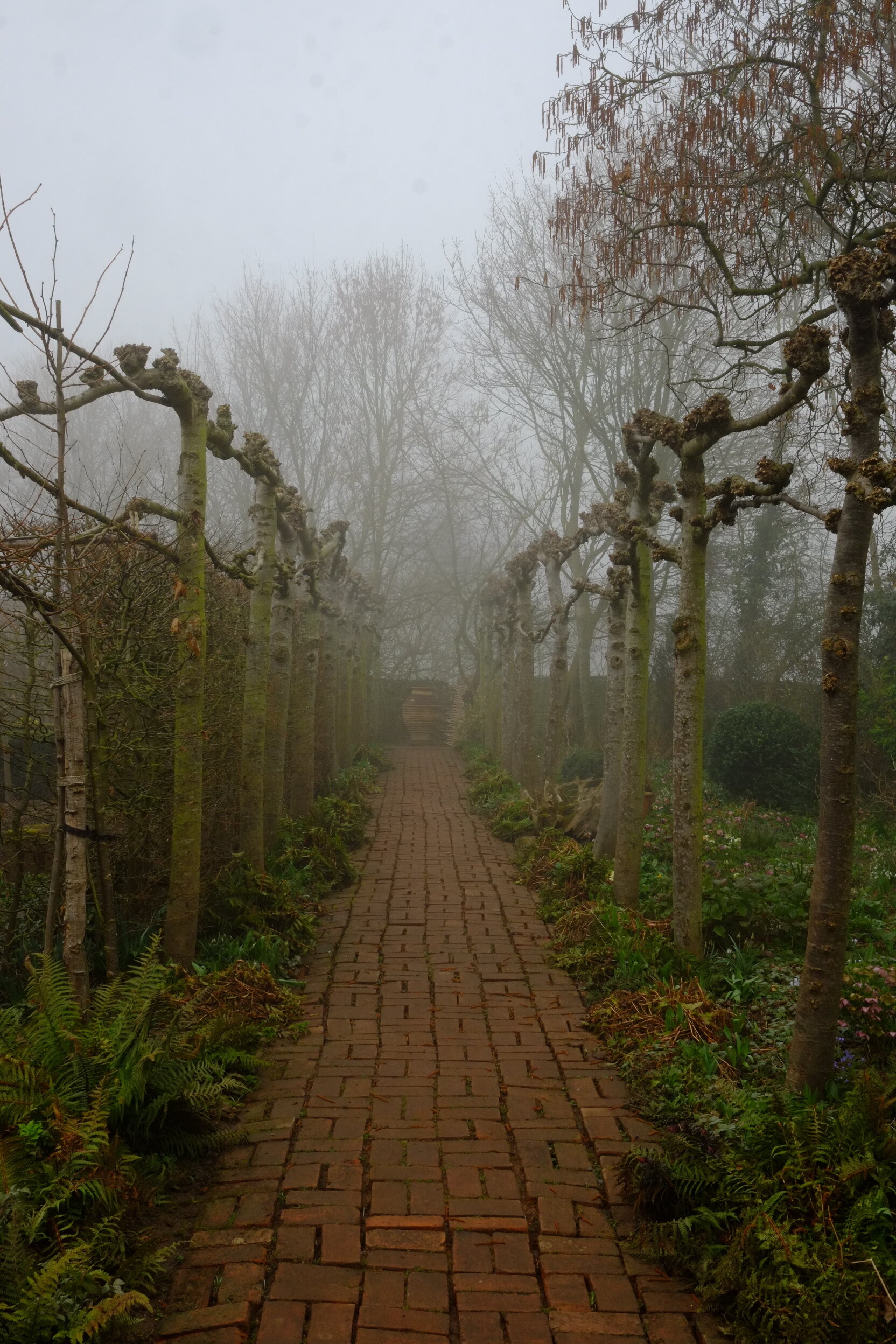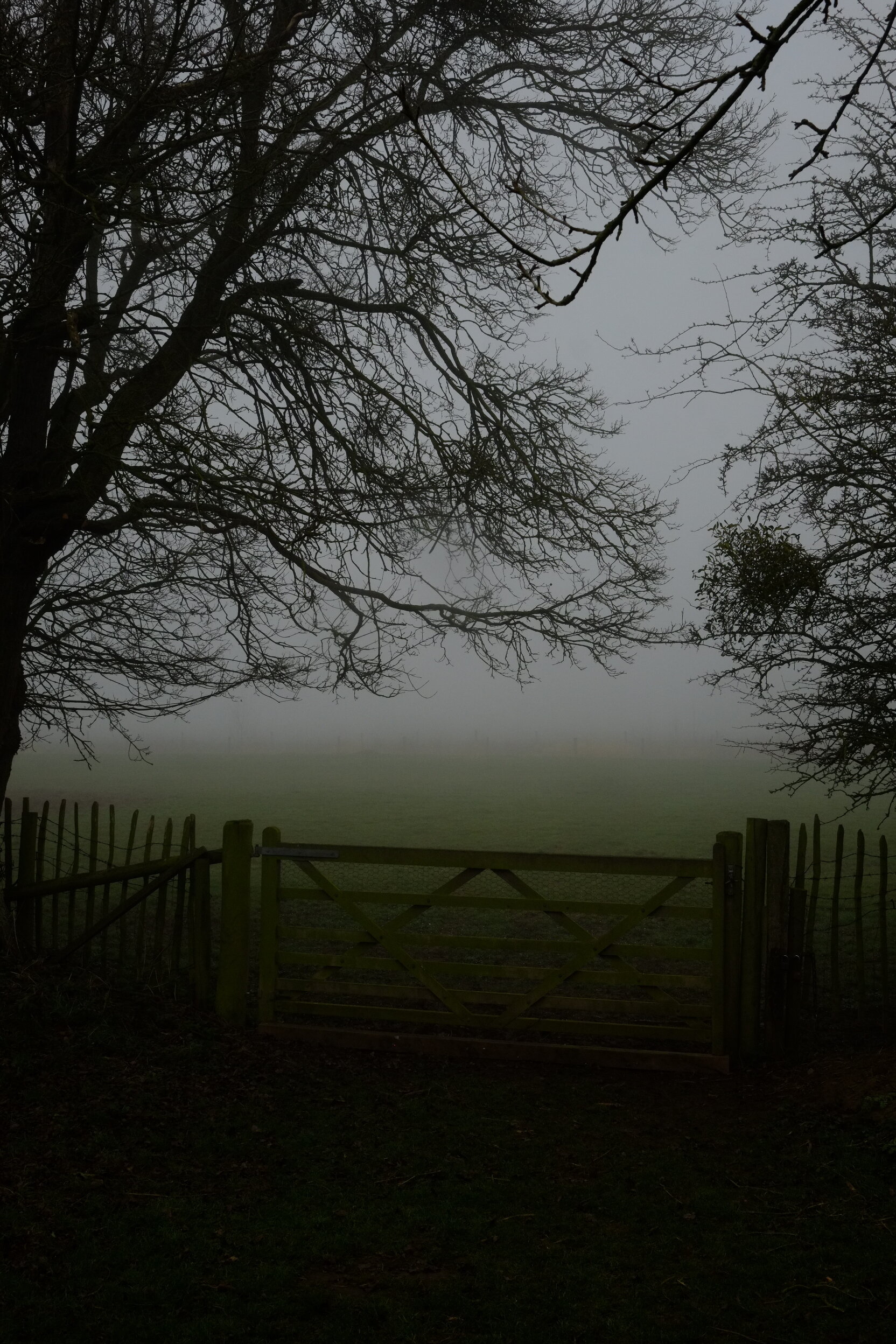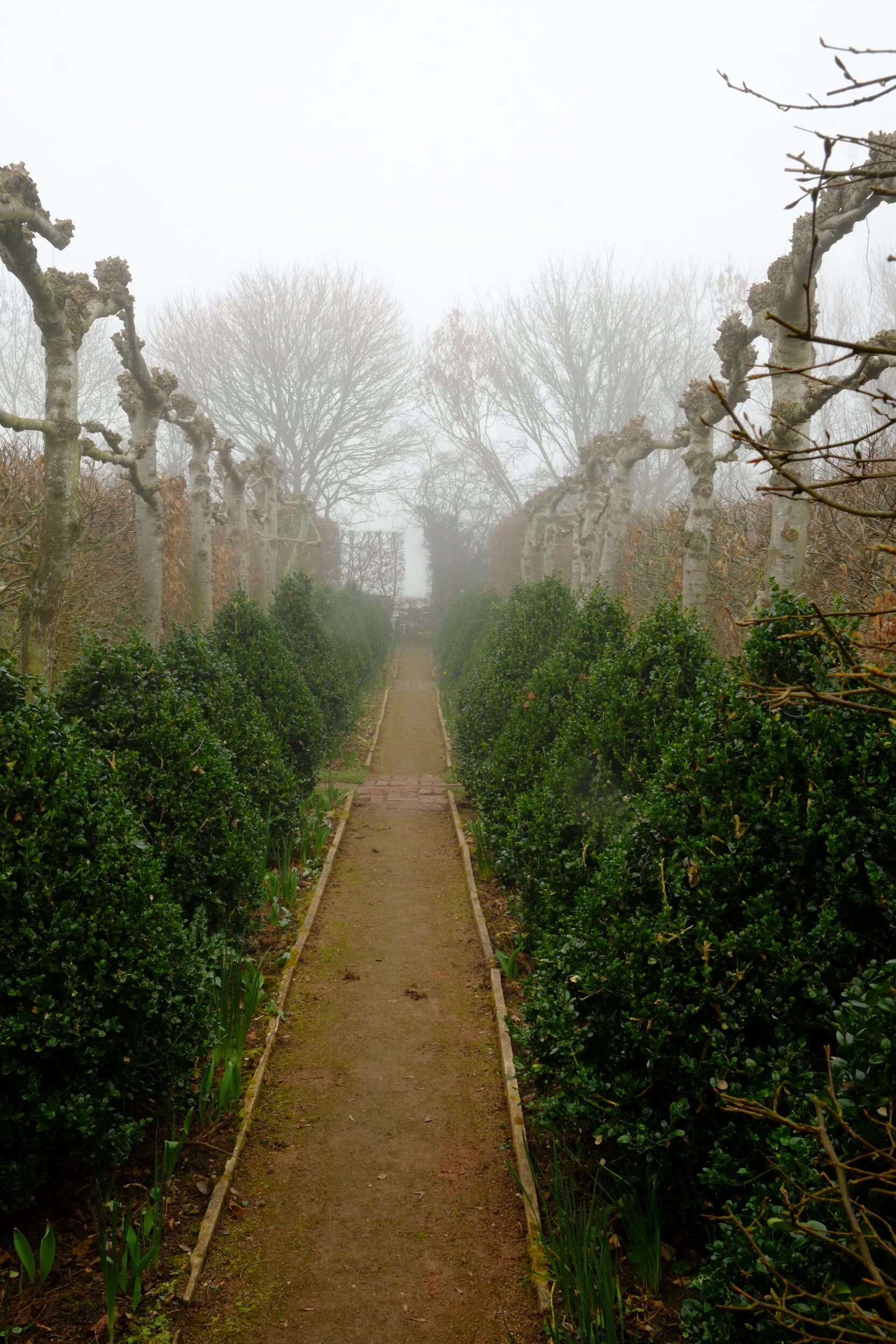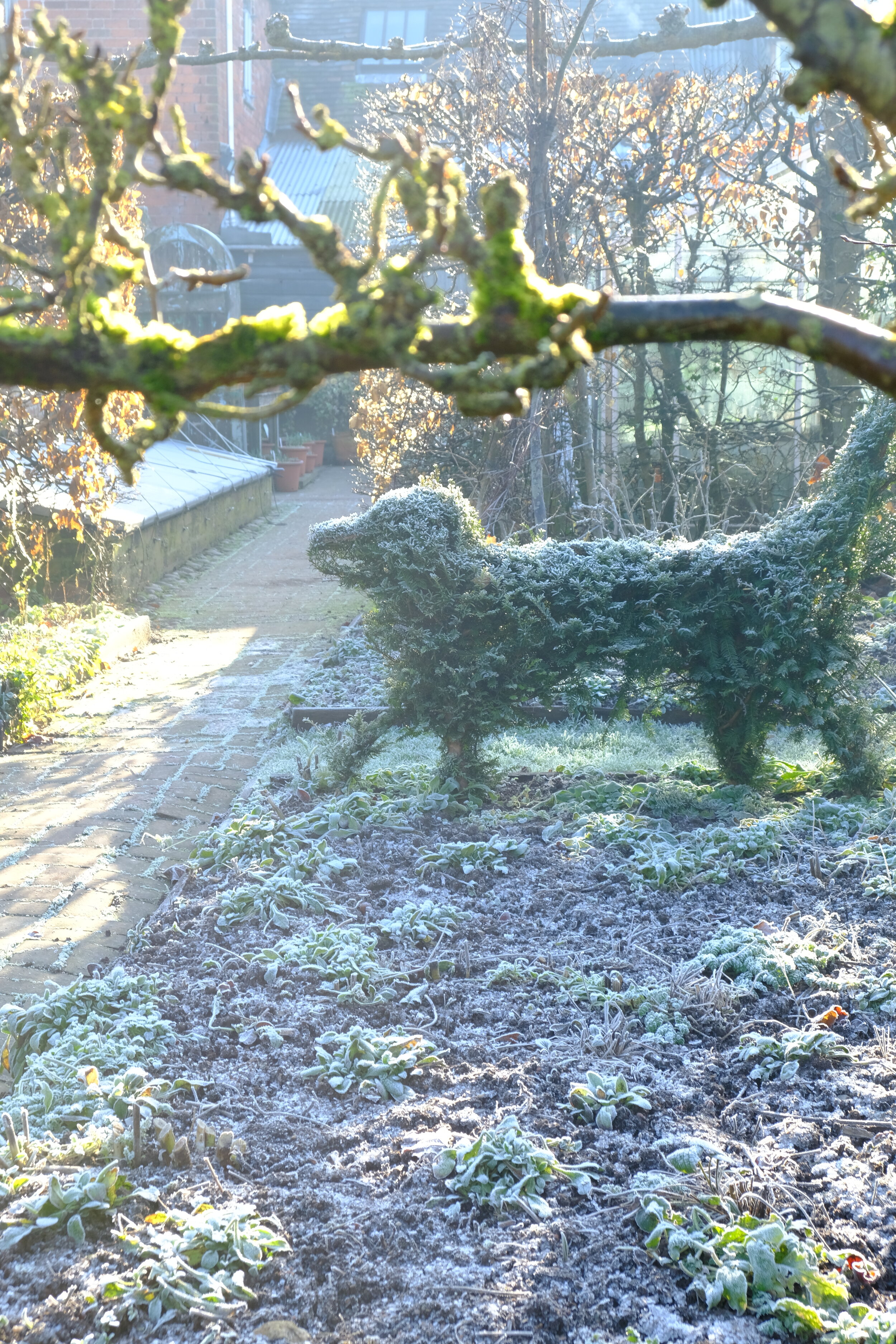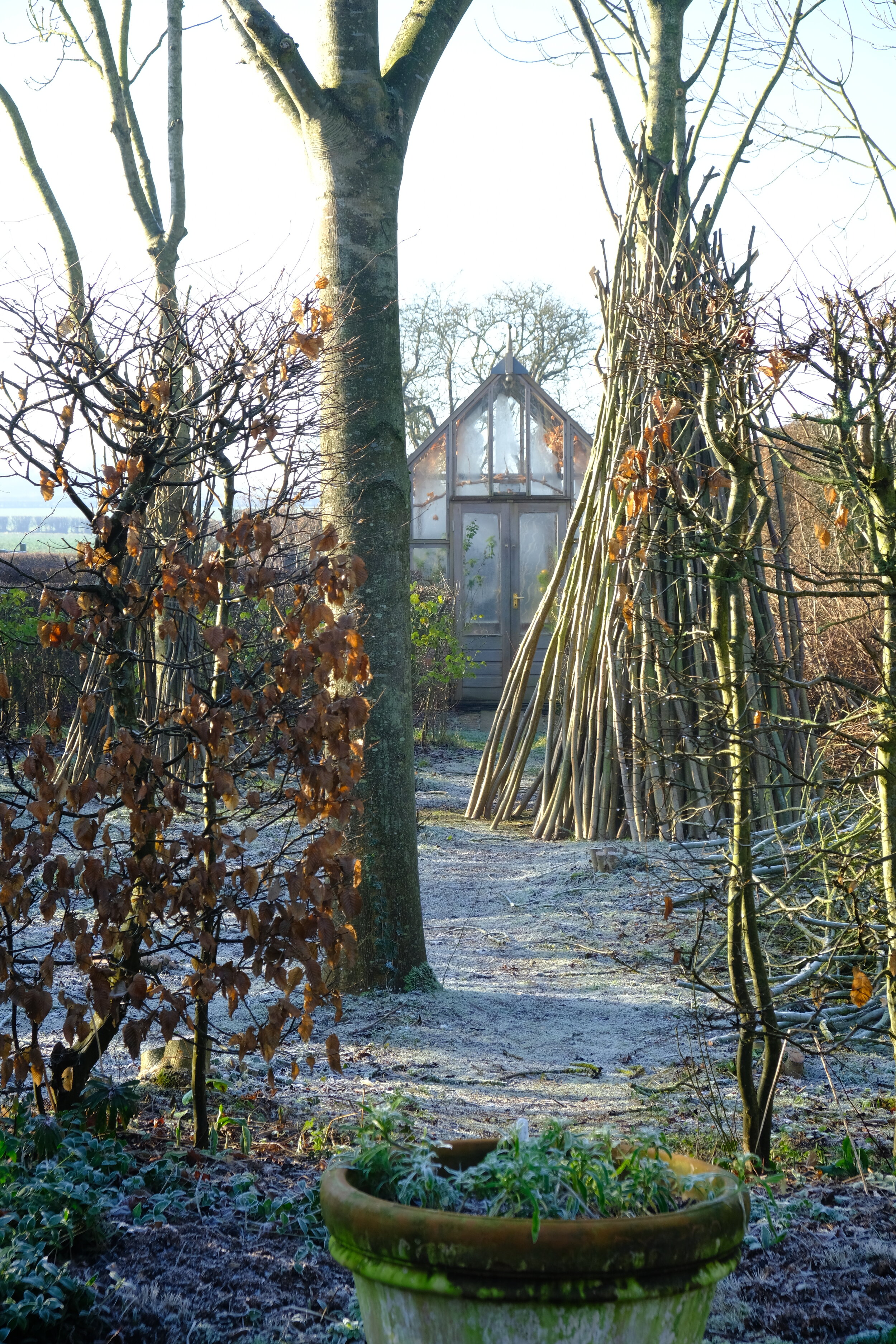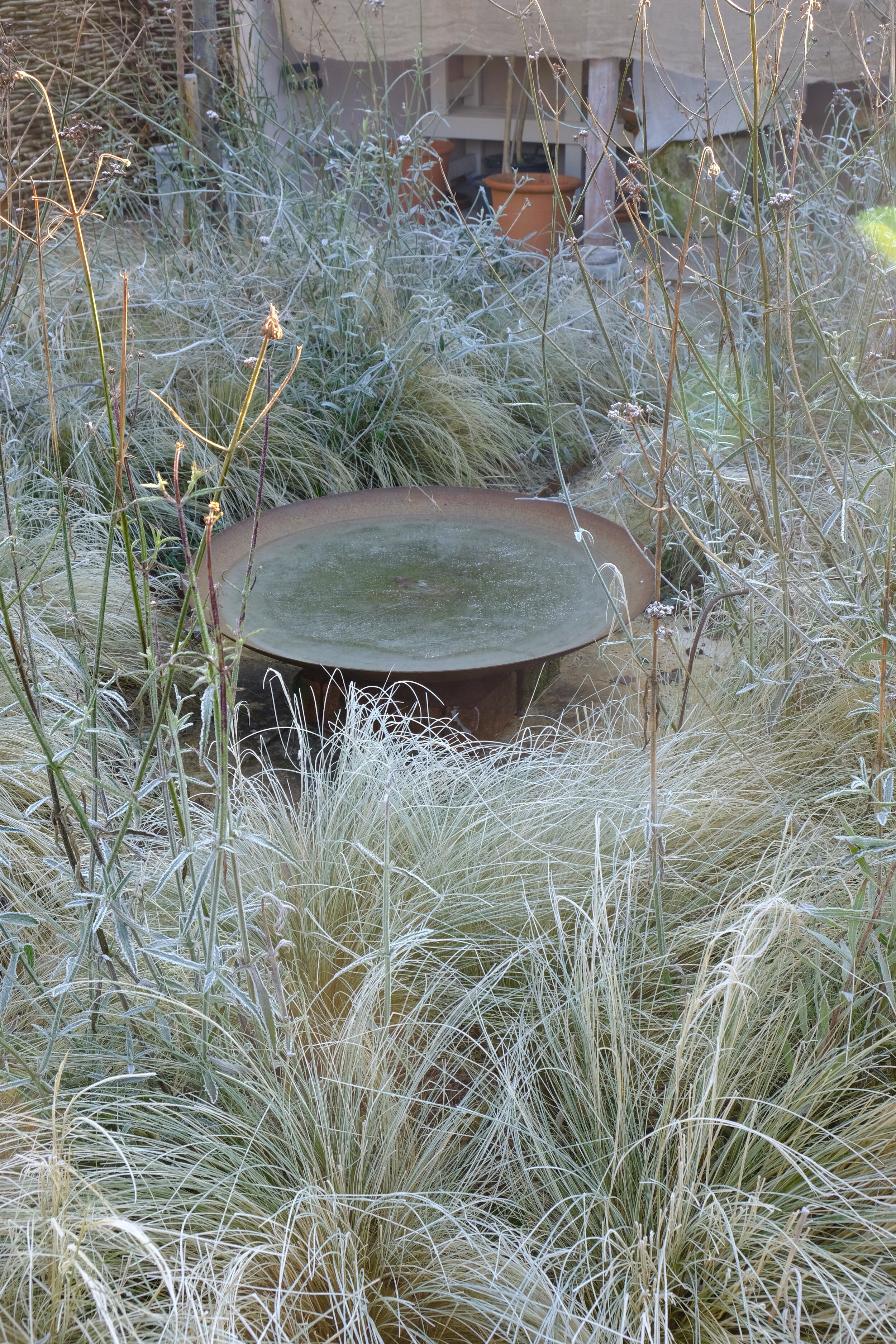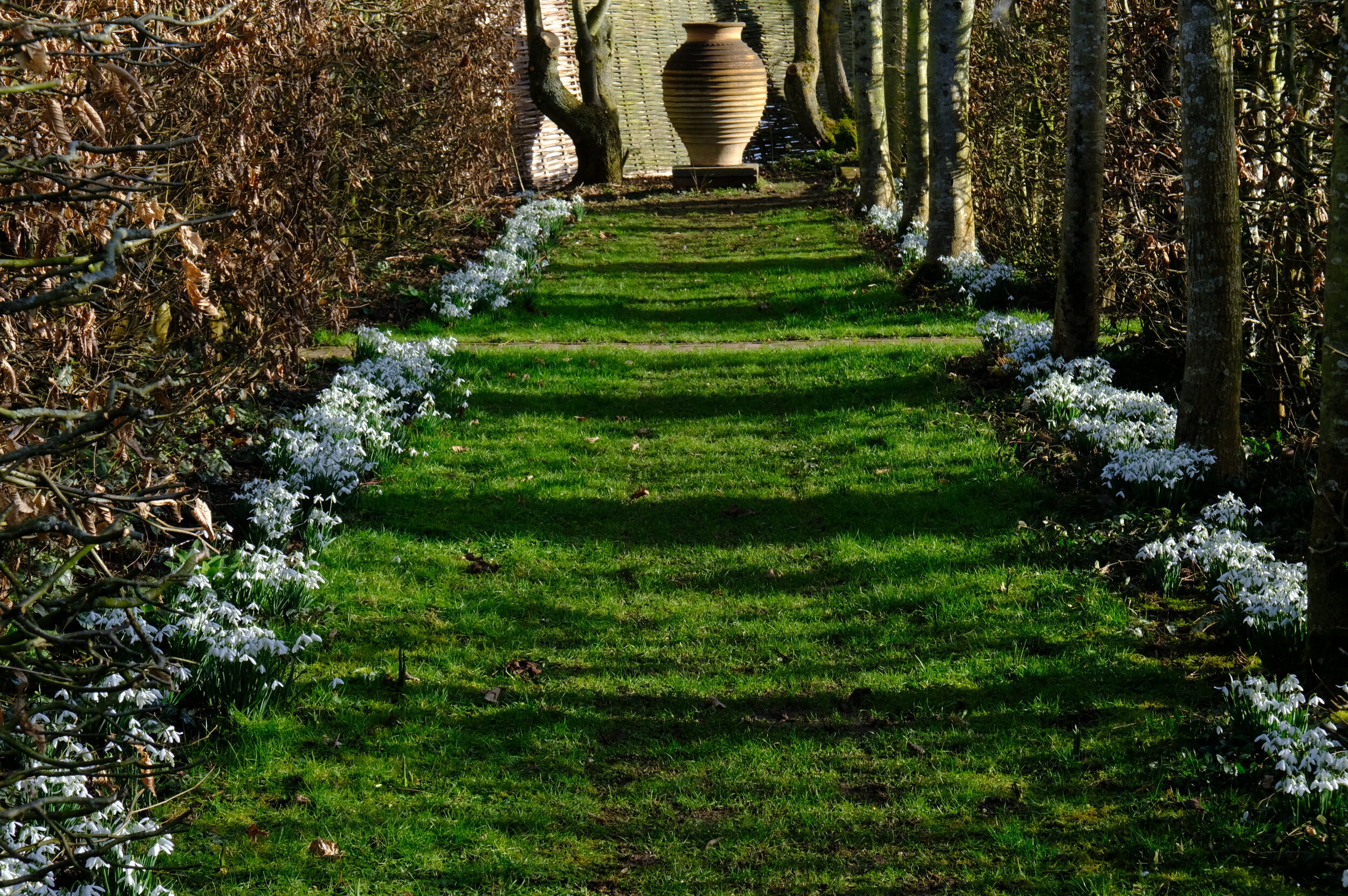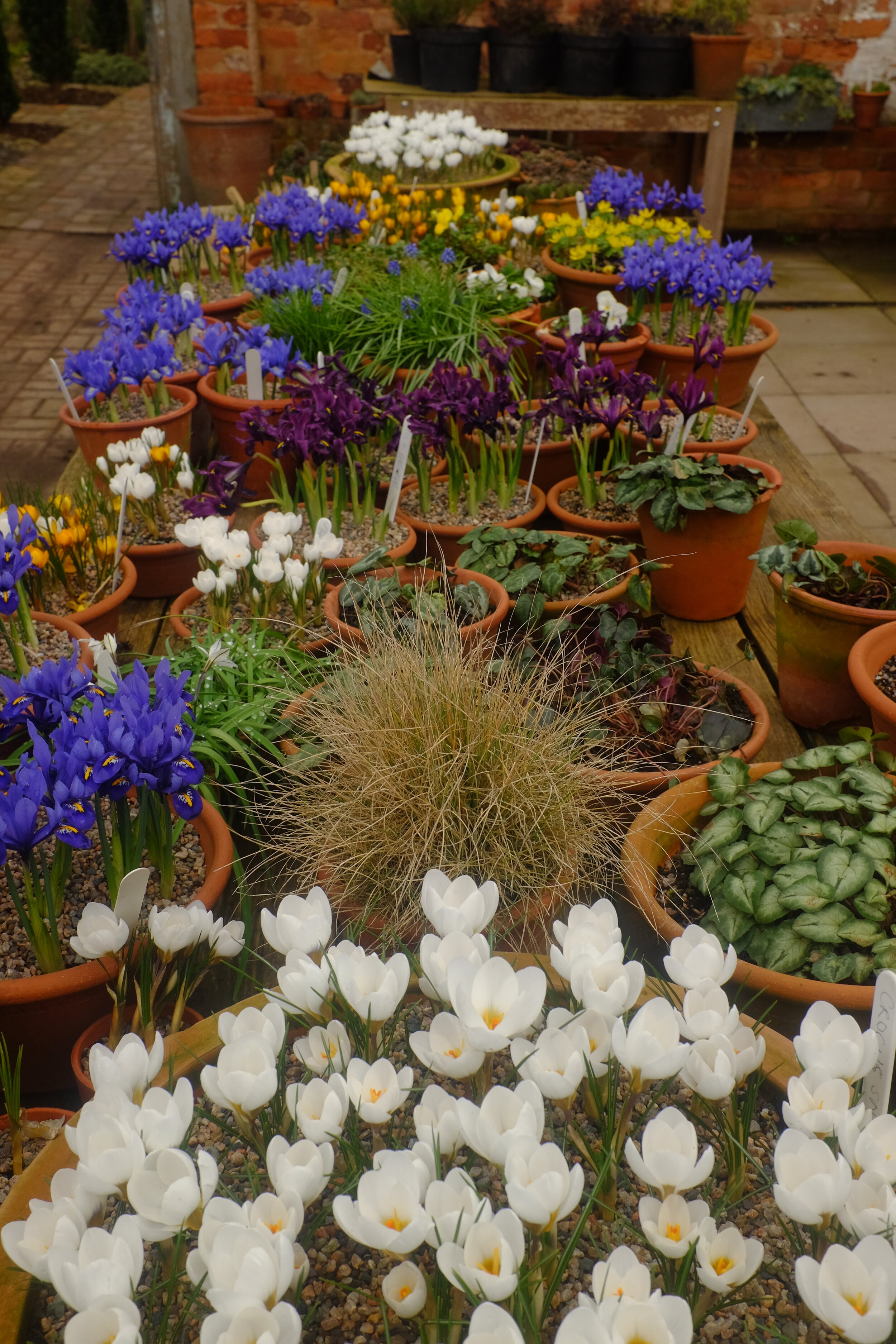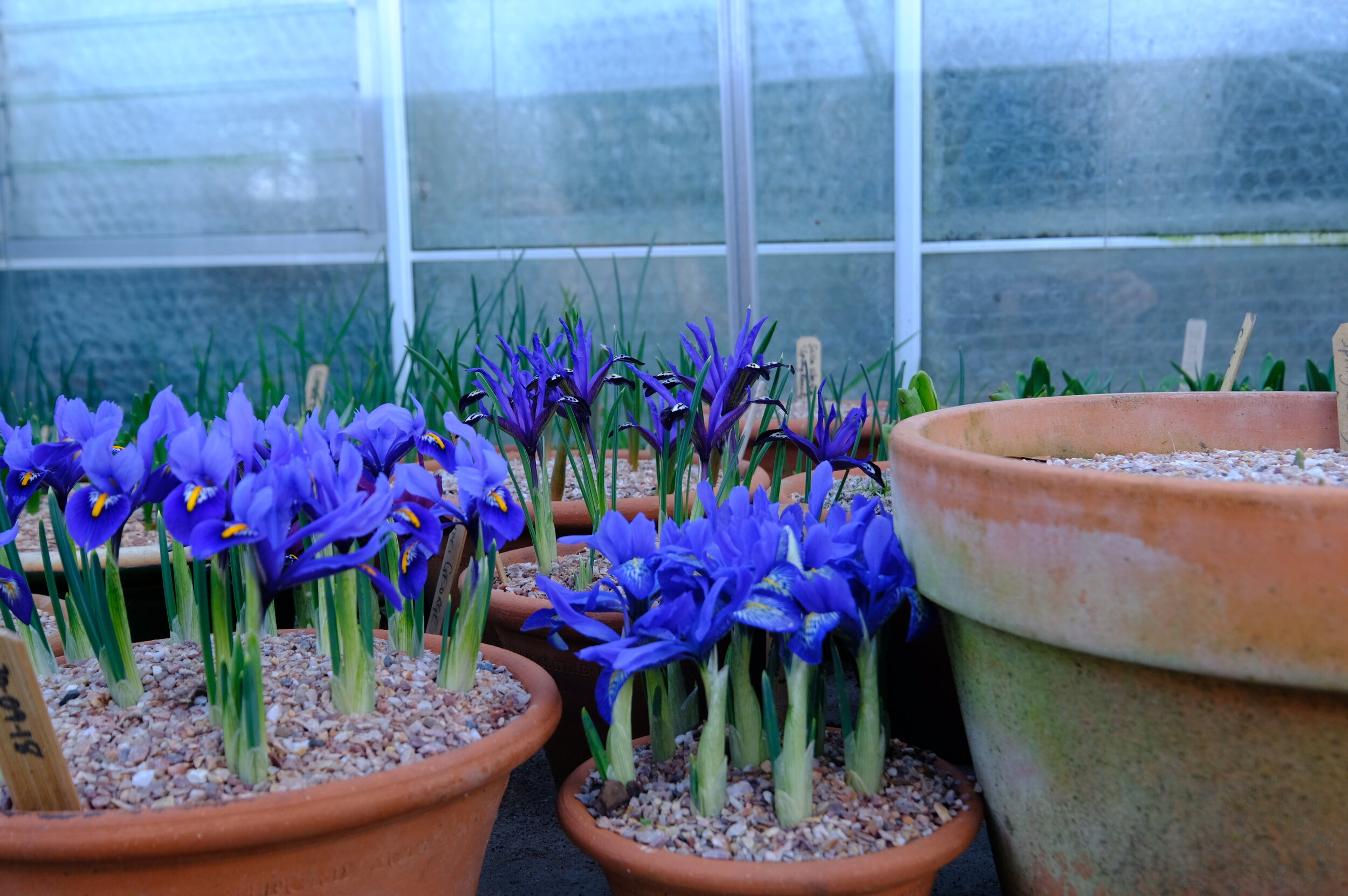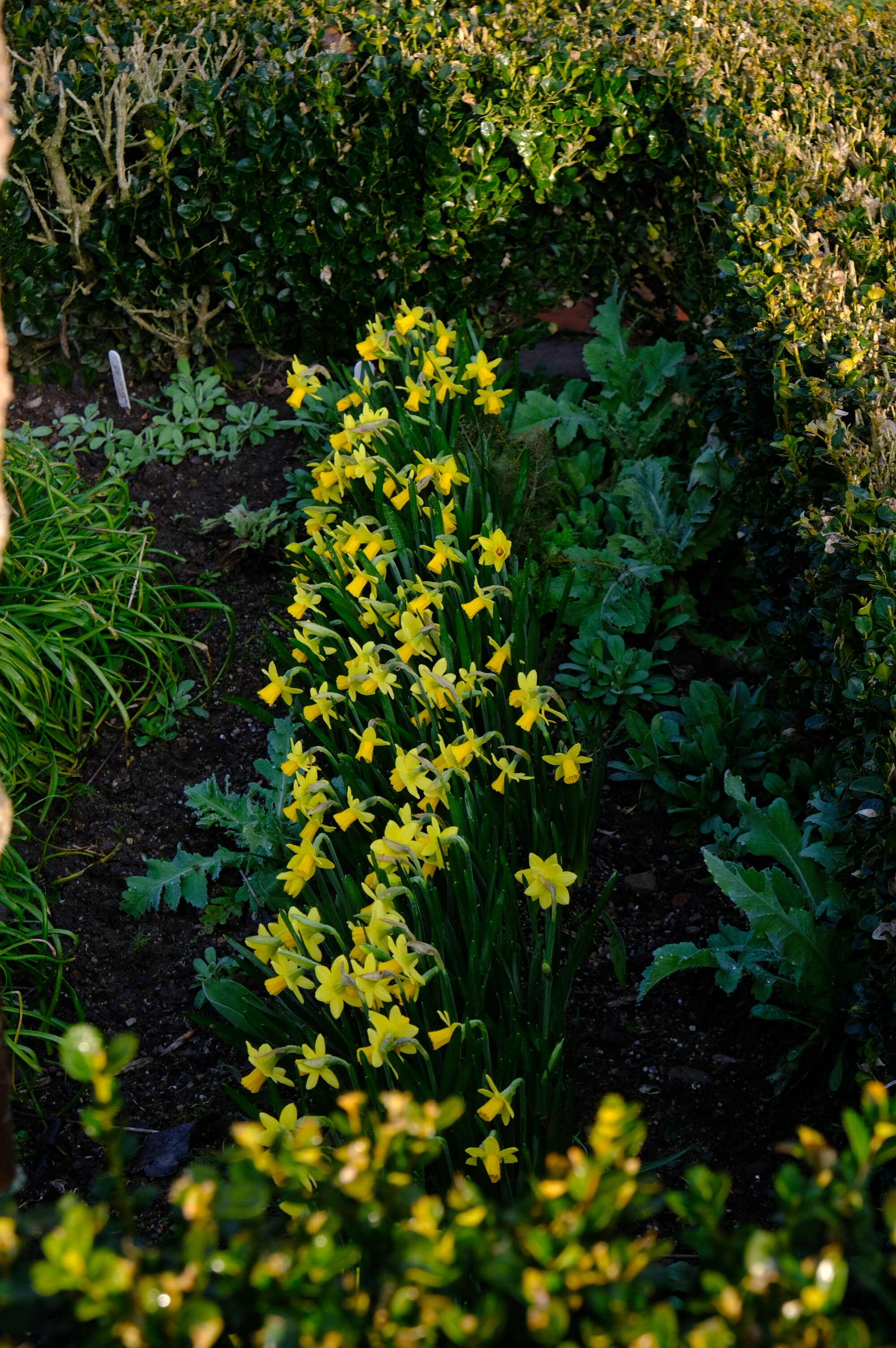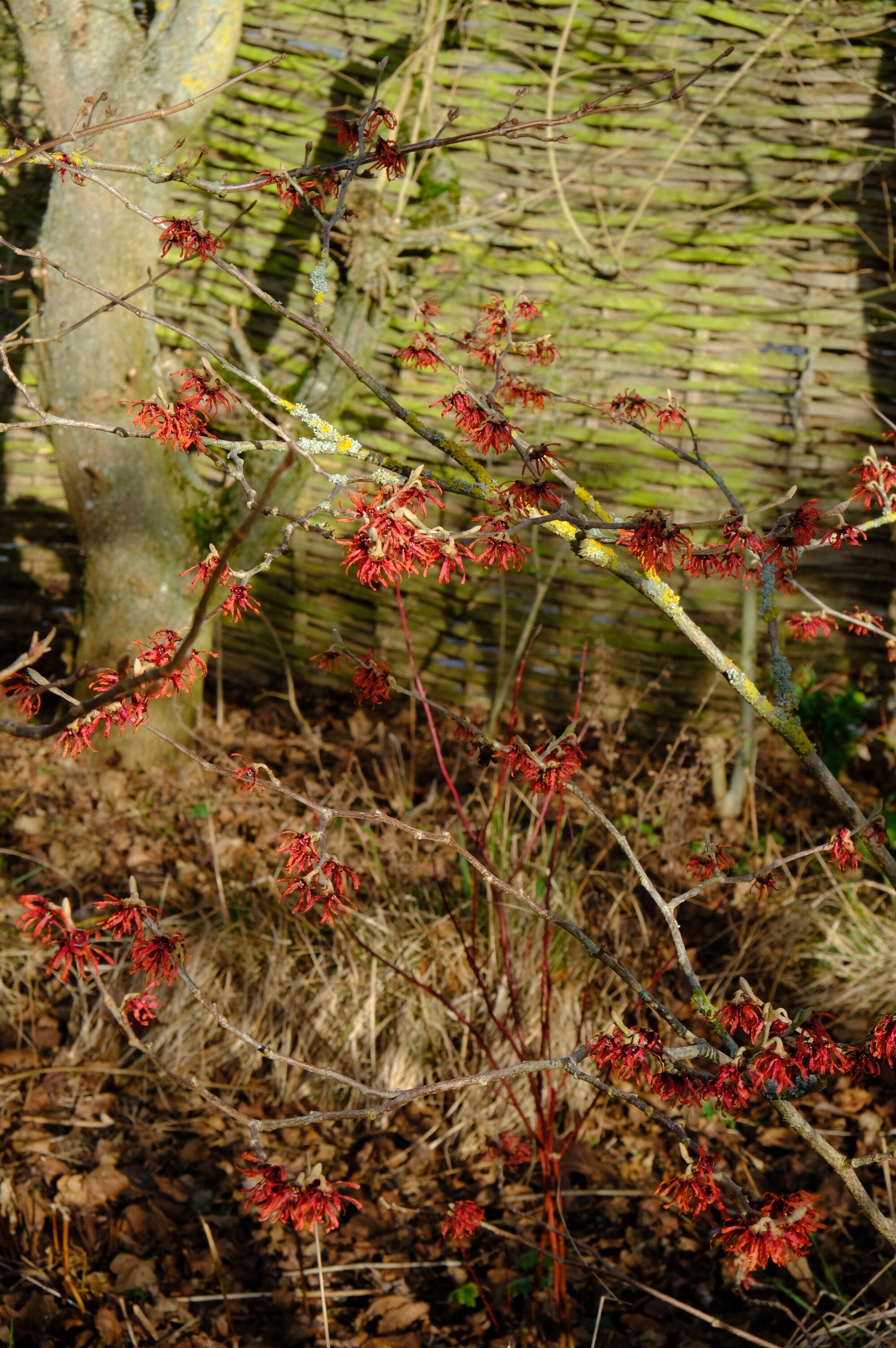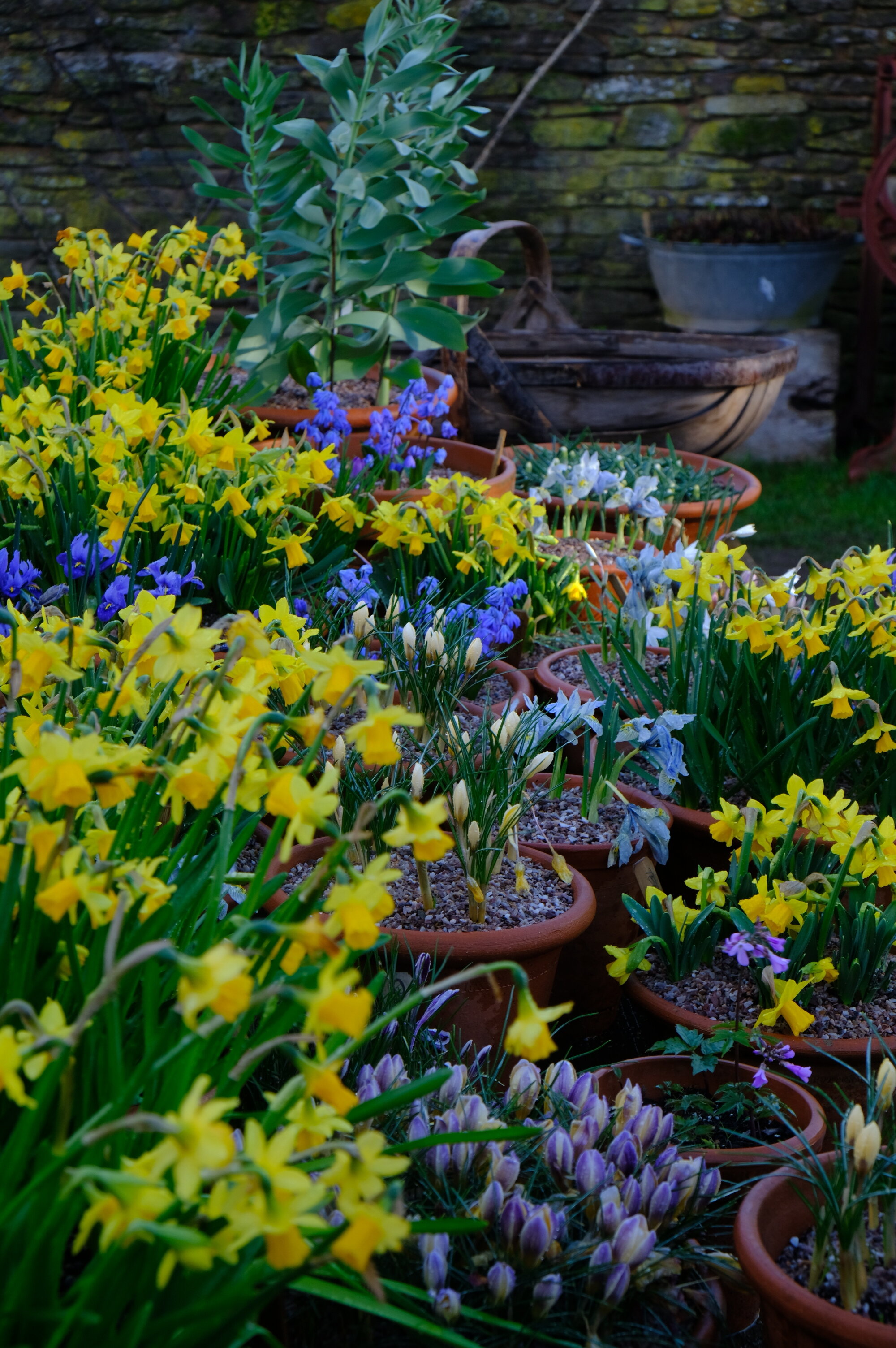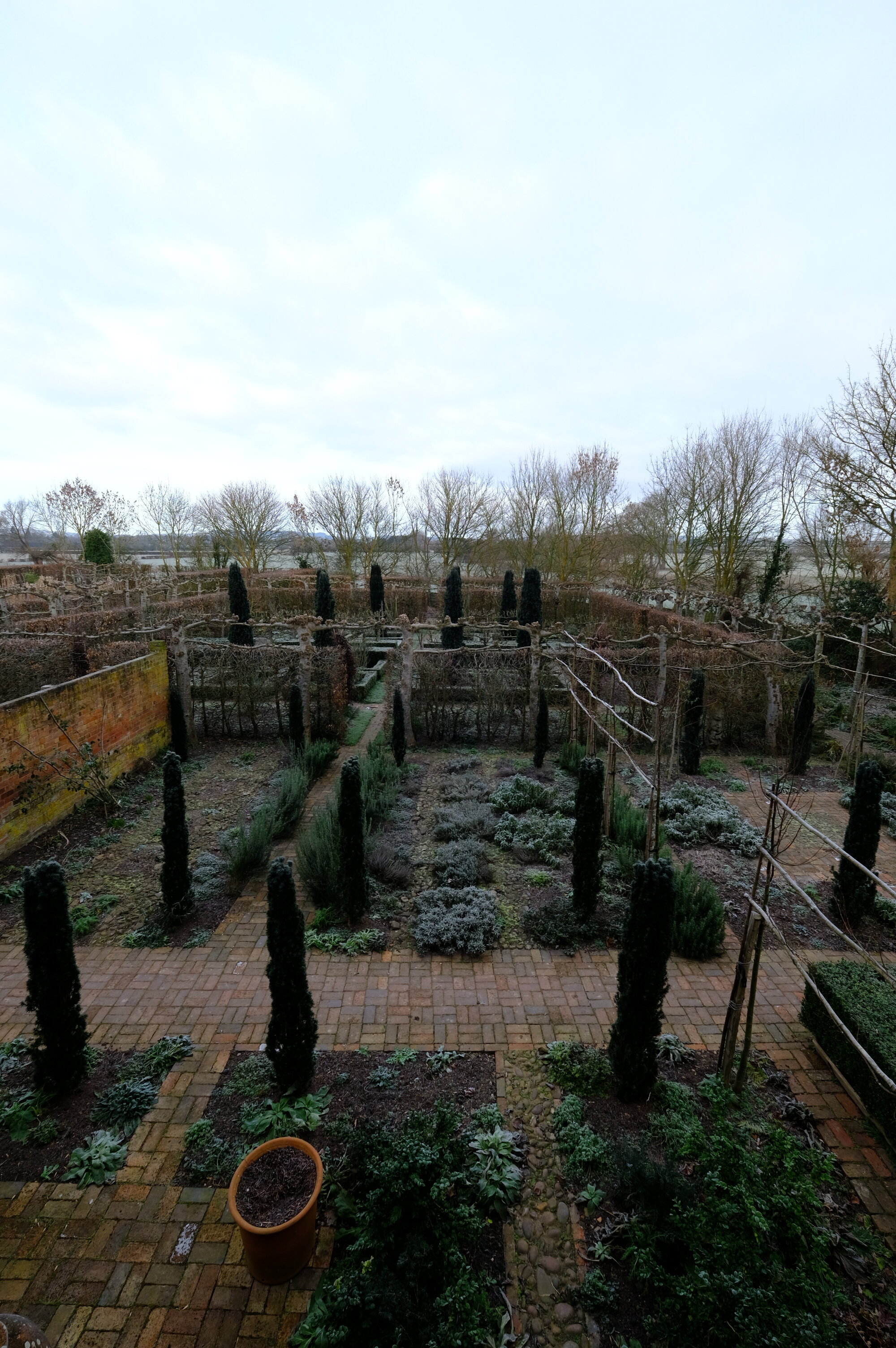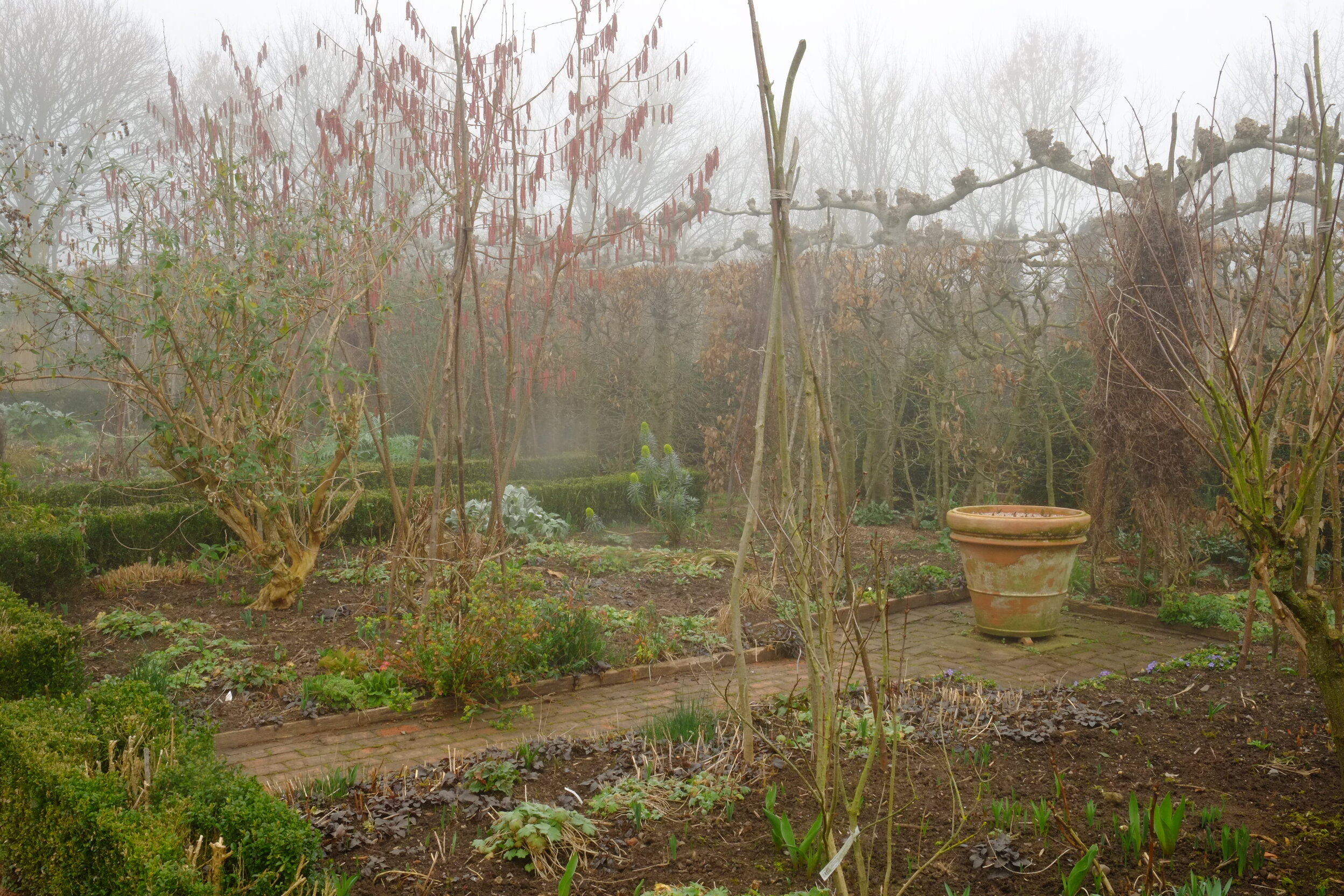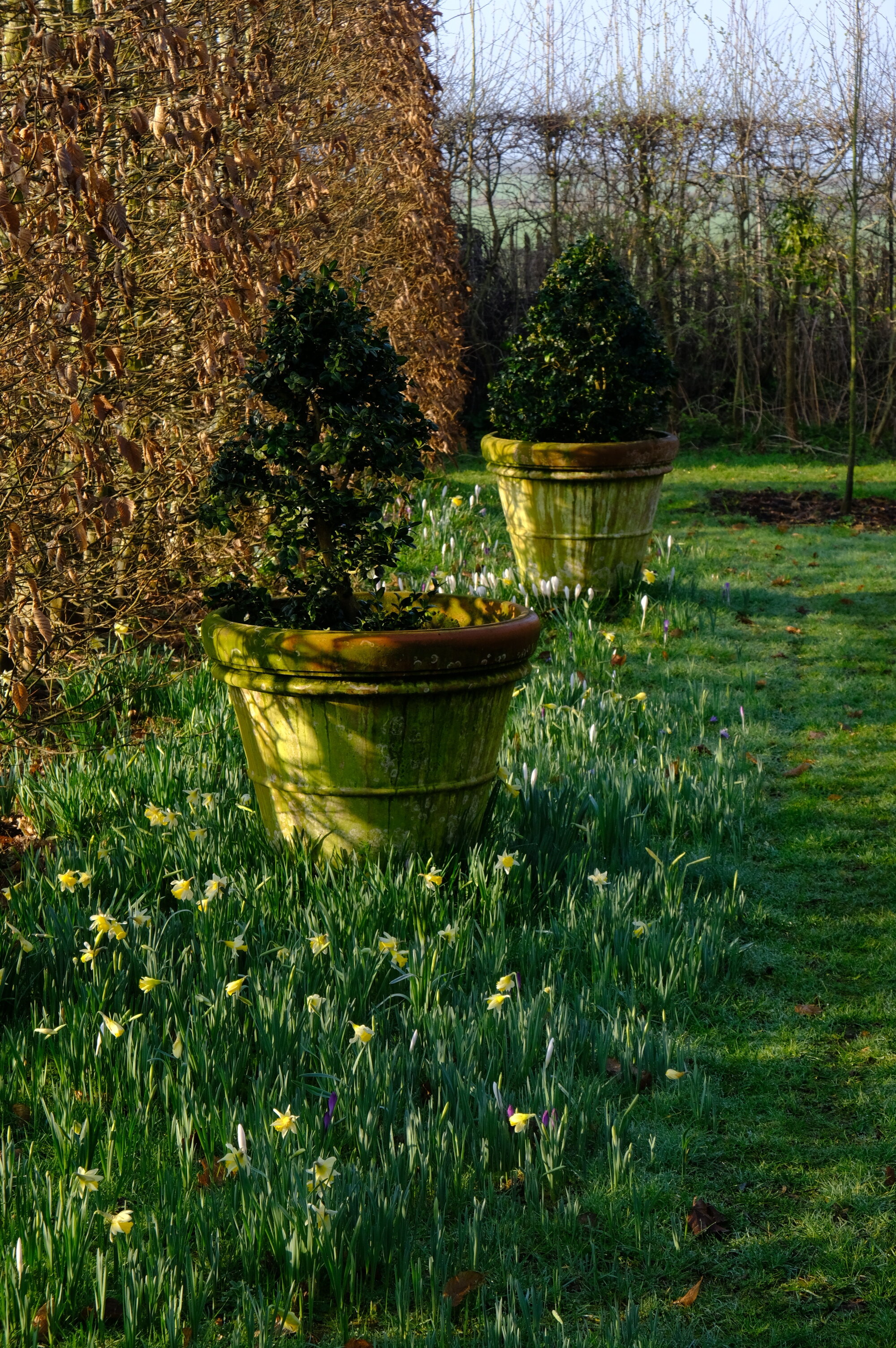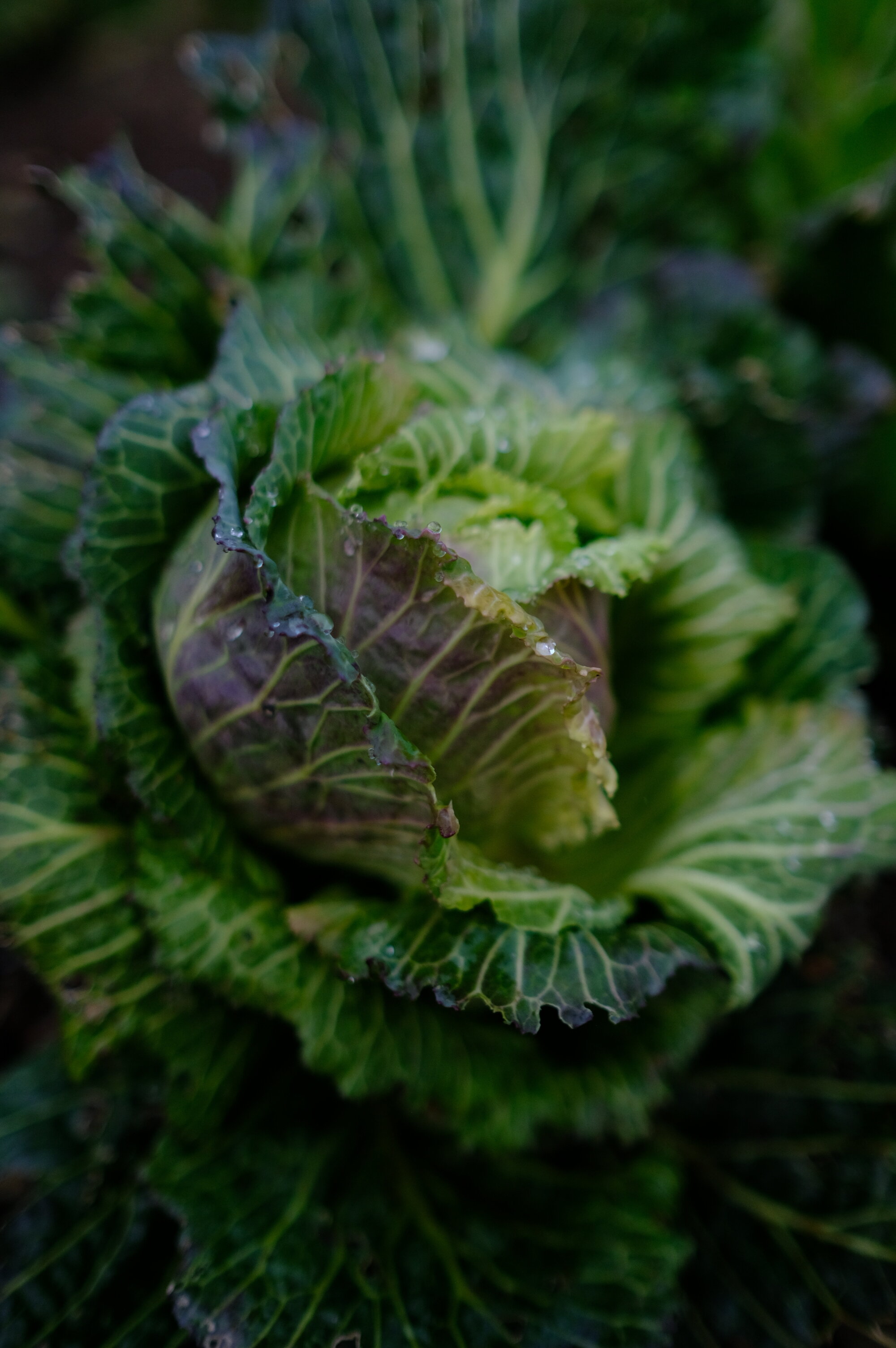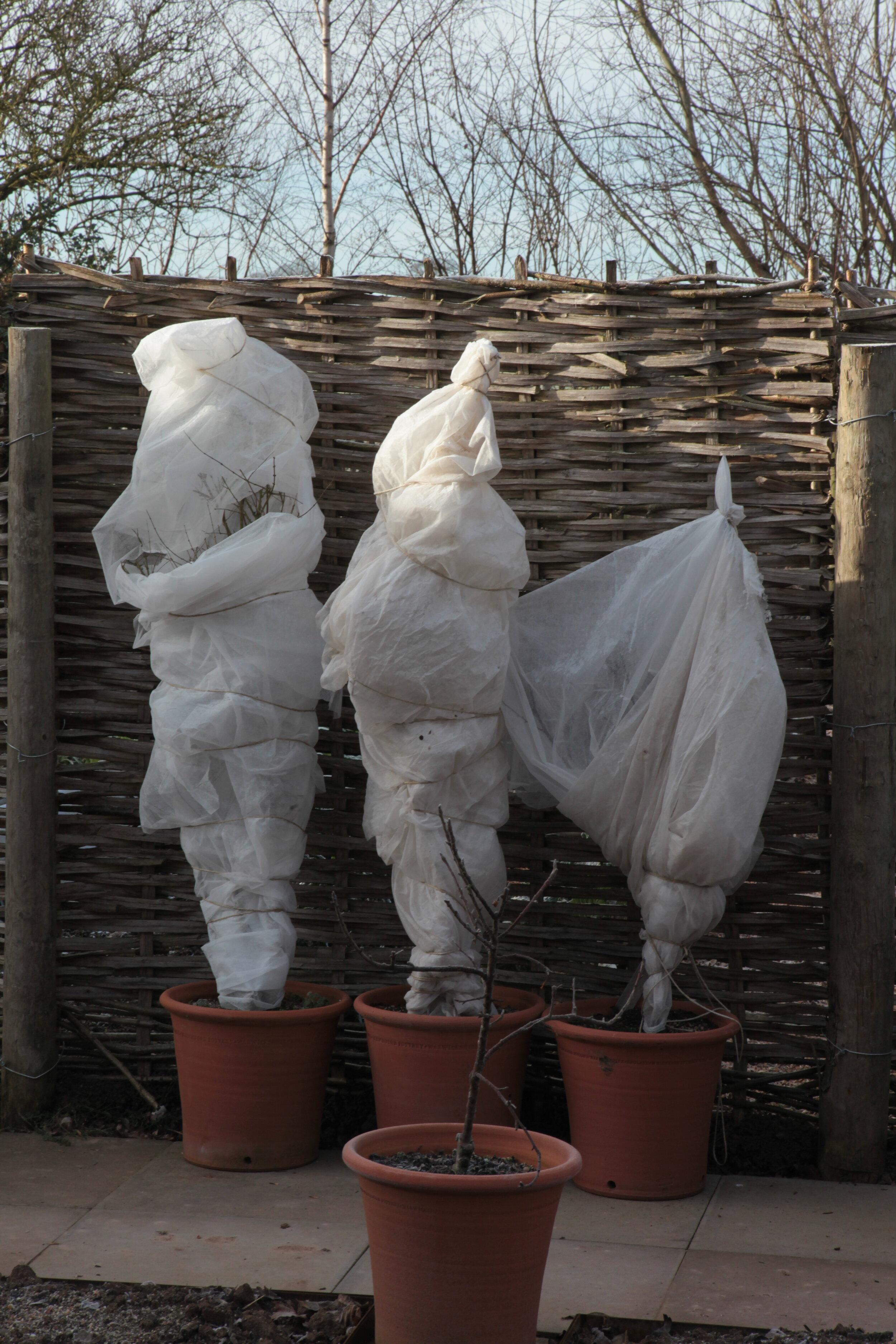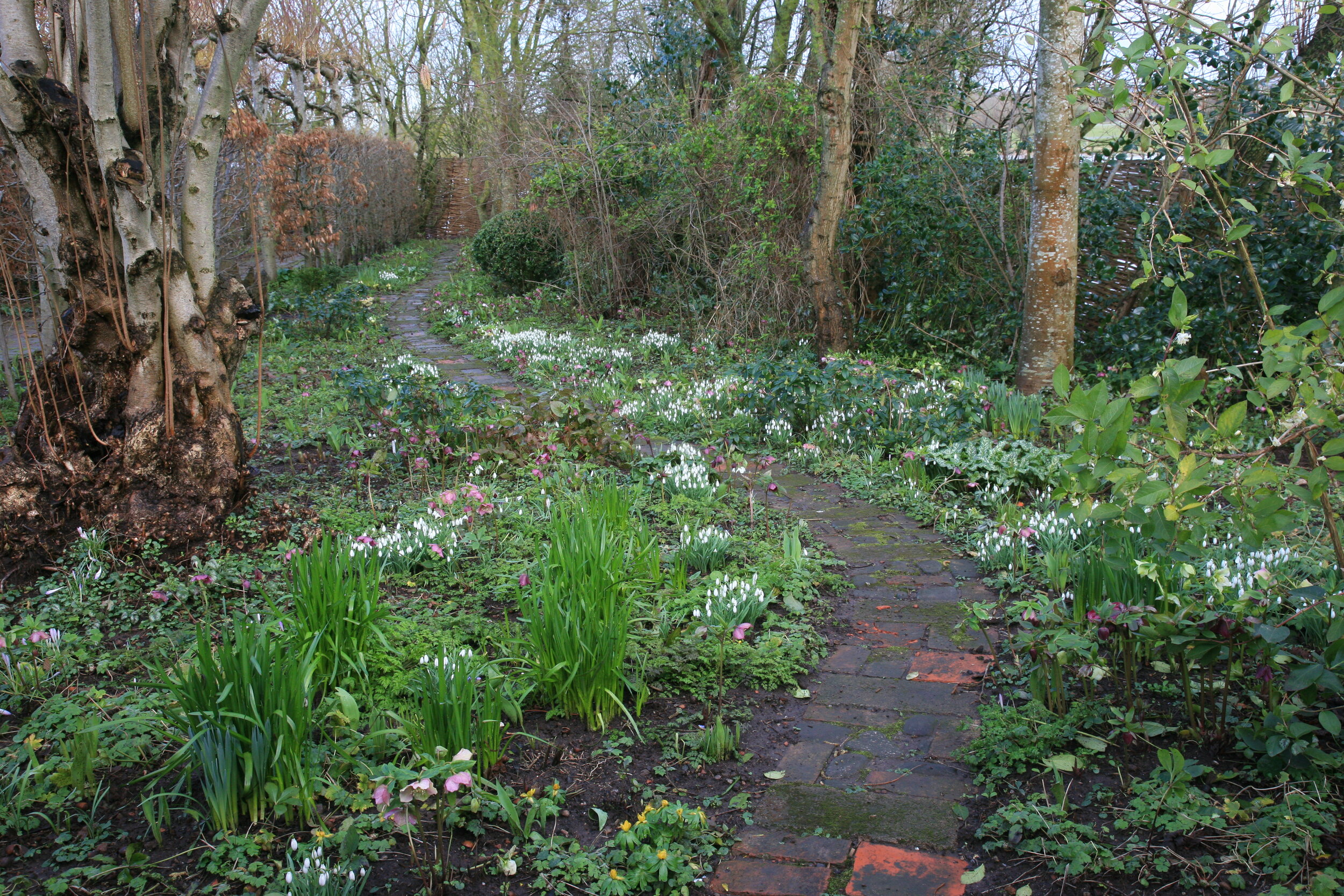February 2020
I know that there are those that find February the cruellest month- the straw that breaks winter’s back - but I love it. Regardless of the weather or the state of the garden, Spring is coming and the days that hang so heavy in the weeks up to Christmas, are getting lighter in weight as well as day length.
Until the end of January I always wake to an absolute, dark silence but as we go into February there is the faint but distinct chattering of birds just before dawn which itself marches in earlier and earlier. This first light is filled with promise and excitement.
The weather can be the coldest of the year and we nearly always get some ice and snow - although last year was one of the warmest Februaries on record, so perhaps climate-change is altering the pattern. Certainly if it is not too cold there is a dramatic surge of growth in the spring flowering bulbs and early perennials.
Hellebores are the grandest plants of February, but you cannot fail to be charmed by them, especially helleborus orientalis in all its forms, modestly holding their astonishing faces to the ground. My hellebores have bred indiscriminately which does result in rather a lot of muddy, pinky brown flowers but I rather encourage this. Too much good taste is bad for you.
As well as relishing the flowers that are increasing by the day, February is a busy month. The days may be lengthening but they are all too short and there is much to do. The garden has to be prepared like a ship setting out for a long voyage. Turn the compost heap. Lay that path. Check the mower and the garden furniture.
In the vegetable garden I dig and, if the soil is dry enough, sow broad beans and plant onion sets. However I do not worry about this - the readiness of the soil is much more significant than the date on the calendar.
The potting shed and greenhouse become the centre of activity, sowing seeds, taking dahlias out of hibernation, chitting potatoes. There is a temptation to sow too much, and almost everything that is to eventually be planted outside is better left until March, but I find it an irresistible impulse to sow as much as I can.
I try and finish pruning the pleached limes, espaliered pears and any top fruit in the orchard as well as the roses late-flowering clematis and buddleias. But none of this can be forced. Ice and snow are likely and flooding not uncommon. But some years it is so mild that we give the grass its first trim before the month is out and the intoxicating smell of cut grass as the sun sets after 6pm on a late February afternoon is one of the most exciting moments in the entire gardening year.
Television
January saw the first showing on BBC2 of my latest series ‘Monty Don’s American Gardens’. It is available via Youtube and will hopefully be broadcast in America in the near future.
The accompanying book ‘American Gardens’ with photography by Derry Moore will be published in the UK in May and in the States in Autumn.
But February is never a month of travel for me. It is dedicated to preparing the garden for the new season of filming Gardeners’ World that begins at the beginning of March and then will run right through until the end of October. I know that the programmes give the impression that a film crew pops round once a week to join me in the garden for an hour or so but I am afraid the reality is that to produce these 30-odd hours of television takes a large team both based in the production office in Bristol and here in the garden.
We spend two days filming at Longmeadow for each programme with a crew of 6 or 7 with each shot repeated perhaps half a dozen times - including Nigel’s bits - and then each filmed insert takes a day’s filming and at least a week to research, prepare and edit. So each weekly 60 minute programme represents about 6 weeks work by around 20 people to take it from conception to your screen.
Here in the garden I have two full-time helpers to ensure that it is both looking as good as possible all the time and that we have as wide a range of horticultural topics to cover as possible. Given that we rarely repeat anything in a year and that each programme covers at least 7 or 8 topics and areas each week - it means that we have to have at least two hundred different stories and displays across the filming season. On top of that you can guarantee that they will decide to film the one bit of the garden that is not looking so good - so even the ‘bad’ bits have to be kept as good as possible.
In short, there is an awful lot of paddling under the water to make it look so serene and easy!
TIPS
MOSS & PEAT
Gardener’s have become very familiar with sphagnum moss through peat which for generations has dominated the potting compost market. Sphagnum is unique in that it can hold up to 20 times its own weight in water. This ability is of vital importance in acting as a sponge and absorbing rainwater, although it is usually only after a bog is cleared that the absence of sphagnum is noticed when areas downstream starts to unaccountably flood.
The peat is formed because individual sphagnum shoots grow upwards constantly and those below are constantly dying - and forming peat and the very characteristic ‘raised’ bog. However these bogs take a long time to form and gardeners bear a heavy responsibility in destroying wetlands by using sphagnum peat. There is no garden on this planet that justifies wiping out our wetlands anymore than it would justify cutting down the rainforest - especially when there are many just as useful alternatives.
So NEVER buy a peat based compost simply to preserve a precious ecological environment.
But the alternatives to peat are extremely good. Coir - which is a natural waste product and can be shipped in huge bulk and thus with a low carbon footprint is excellent. So are a number of bark-based composts and home-made compost using leaf mould, soil and sieved garden compost.
Far better to visit the bogs and enjoy the wildlife and unique landscape where it is rather than gratuitously ripping it up to spread on our gardens.
PRUNING CLEMATIS
When pruning clematis there is one really important consideration: when does it flower?
The old rhyme “if it flowers before June do not prune” will get you out of most trouble but clematis can be subdivided into three flowering groups;
Group 1. Early flowering (up to late May). includes C. montana, C. alpina, C. armandii, & C. macropetala. They tend to have many small flowers which are produced on growth made the previous summer. So if you prune now you will be cutting off all flower buds. You will not harm the plant but will radically reduce the quantity of flowers. Trim as necessary (i.e to shape and size) in June. Garden shears are often the best tool for this.
Group II. Mid season flowering (late May to early July). Tend to have much less vigorous growth and much larger flowers. Include ‘Niobe’, ‘Barbara Jackman’, ‘Nelly Moser’, ‘The President & H.F. Young’. These often flower twice, first on growth produced the previous year and again on new growth. The second flush is always of smaller flowers.
If you prune hard at this time of year you will not have any early, large flowers but plenty in late summer. The best bet is to remove all weak or straggly stems now as well as all growth above the top pair of healthy buds.
Group III. Late flowering (after mid June) Includes clematis ‘jackmanii'‘, ‘C. viticella’, ‘Gypsy Queen’, ‘Hagley Hybrid’, ‘Perle d’Azur’ and ‘Ville de Lyon’. All are multi-stemmed. They all flower on growth made in spring so all the previous year’s growth should be cleared away now. I always cut down to about 2ft from the ground, leaving at least two healthy pairs of buds.
PRUNING ROSES
There is a lot of mystique about rose pruning, whereas the reality is that they are all tough shrubs that can take a mauling by anything from secateurs to a flail cutter and bounce back. However there are three considerations to bear in mind when pruning roses.
1. Hybrid teas, floribunda and Hybrid perpetuals. These flower on the current season’s wood. So they should be pruned hard each spring, removing all weak, damaged or crossing stems first and then pruning the remaining stems to form an open bowl of stubby branches. Don’t worry too much about outward sloping cuts but do always cut just above a bud. Remember to cut the weakest growth hardest.
2. Shrub roses. These need very little pruning and a once-over with a hedge trimmer has proven to be very effective. I prune mine in early spring by removing exceptionally long growth, damaged or crossing branches and then leave alone. There is a strong case for doing this in late summer or early autumn.
3. Climbing Roses. This can be subdivided into two groups:
a) True climbers which tend to have single, large flowers covering the period from early summer right into autumn. These include ‘New Dawn’ ‘Albertine’ & ‘Dorothey Perkins’. These should be pruned in Autumn or Winter, trying to maintain a framework of long stems trained laterally with side branches breaking from them. These side branches will carry the flowers on new growth produced in Spring. Ideally a third of the plant is removed each year - the oldest, woodiest stems -so that it is constantly renewing itself.
b) Ramblers which have clusters of smaller flowers just once in mid summer. These include ‘Bobbie James’, ‘Rambling Rector,’ ‘Paul’s Himalayan Musk’ & ‘Wickwar’. These need little pruning but should be trained and trimmed immediately after flowering as the flowers are carried mostly on stems grown in late Summer.
PRUNE BUDDLEIAS
If you live in the South or a sheltered area now is the best time to prune the Butterfly bush, ‘Buddleia davidii’, and it can be done any time in the coming month in colder areas. It produces its flowers on new growth so if it is cut back hard new, just before it begins growing, you will both stimulate extra new shoots and make sure that the shrub has as high a proportion of flower to wood as possible.
If your buddleia is growing in the open it can be cut back very hard indeed- leaving just two or three sets of new shoots from the base. If it is growing in a border it is better to cut back to two or three feet from the ground so that the new growth does not have to compete with surrounding herbaceous plants for light and air.
If you cut the pruned stems into short lengths they can be placed as a bundle in a corner to make excellent cover for insects and small mammals and thus add to the wildlife in your garden.
What to do in the garden this month:
PRUNING TIPS
Always use really sharp tools for pruning. Not only does it make life much easier but it also makes for much cleaner cuts and therefore causes less damage to the plant. Sharp tools are also much safer.
Always use a tool that is operating within its capability. So never strain. Use loppers for stems too thick for easy cutting with secateurs and a sharp saw (Japanese ones are superb) for anything that strains loppers.
Never paint over pruning wounds as this seals in potential disease. Leave them to scar over naturally.
SOW TOMATOES
I like to sow tomatoes in two batches, the first now and another in a month’s time both to stagger the harvest and as an insurance against bad weather scattering the seed thinly on the surface of peat-free compost in a seed tray and then very lightly covering them either with a layer of more compost or of vermiculite. Water them well and put them in a warm spot to germinate.
When the seedlings emerge make sure that they have as much light as possible and when they develop their first pair of ‘true’ leaves - that is to say leaves, however small, that are recognisably a tomato rather than the ones that grow initially - you know that they have roots and should be pricked out into better compost and individual pots or plugs to grow on into young plants ready to plant out in May.
CHITTING POTATOES
Potatoes grow from sprouts that emerge in spring from the tubers and we are all familiar with transparent sprouts emerging from potatoes stored in the dark at this time of year. But if seed potatoes are exposed to light now the new sprouts will be knobbly and dark green.
When these ‘chitted’ potatoes are planted they are are primed to grow away extra quickly. This is especially beneficial for first earlies or maincrop varieties grown where blight is likely.
Place the seed potatoes in a seed tray or egg box and put somewhere bright, cool but frost free. The knobbly shoots will start to appear after a few weeks and can then be left until the soil is warm enough for planting.
SOW BROAD BEANS
If the ground is at all workable then I always try and sow some broad beans in February for an early crop. As soon as the soil warms up a little and the days get longer they will have had enough of a start to provide a picking a week or so earlier than the later ones - and that is a treat worth preparing for. Broad beans are legumes and although they add nitrogen to the soil they do best in ground that has had plenty of organic material added to it.
Sow the bean seed about 8 inches apart in double rows with about a foot or so between the lines and plenty of space - ideally about 3 ft - between these double rows. You can draw a drill and place the beans in it and then cover them back over or, as I do, simply push each bean directly into the prepared soil. The best variety to use for these early beans is ‘Aquadulce’ although ‘Witkiem’ does well too.
SOW ROCKET
Rocket is deliciously peppery and succulent and makes a delicious early spring salad leaf. Now is the best time to sow it as it germinates very fast and will grow in relatively cool weather whereas most lettuce needs warmer conditions to grow well.
Either sow directly where the crops are to grow or into plugs that can be germinated under cover and planted out when the seedlings are growing strongly. In both cases leave plenty of room - 6-9 inches - between individual plants. This will help them to develop a strong root system which will produce stronger growth and a much greater number of leaves to harvest. The leaves are best cut as needed and will rapidly regrow as a result.
Another advantage of sowing rocket at this time of year is that it avoids flea beetle - which will leave a rocket leaf pinpricked with scores of tiny holes, each one of which callouses and makes the leaves tough to eat.
CHECK TIES & SUPPORTS
This is not a glamorous job but an important one. Go round your garden checking all supports, wires, ties and structures that will be carrying climbing plants this year. Any that are damaged or a bit ropey should be repaired or replaced now before they need to be used and before new growth begins that might be damaged by such repair work or even your heavy footwork in a border.
FEED BIRDS DAILY
Keep on feeding birds as they are now beginning to mate, nest and lay their first clutches of eggs. The better nourished the parent birds are, especially in cold weather, the larger and healthier the offspring will be. So feed fat, nuts and seeds daily throughout the month and be sure to provide fresh drinking and bathing water.

